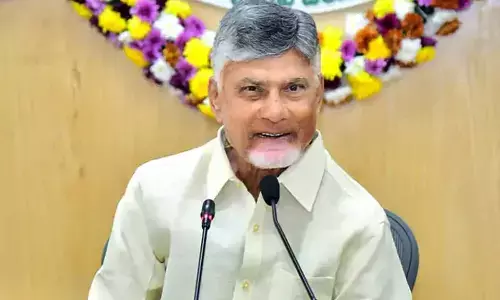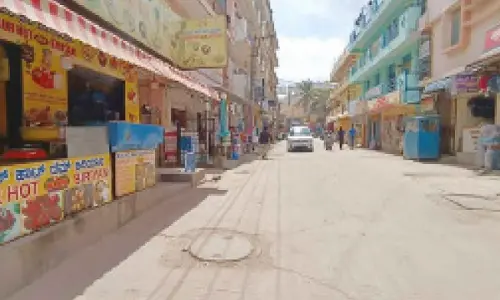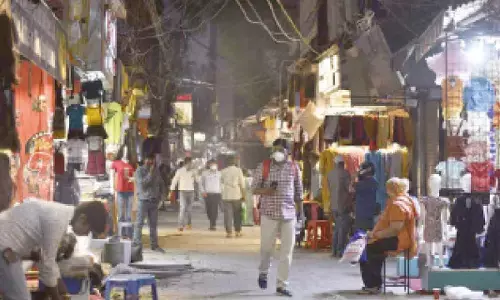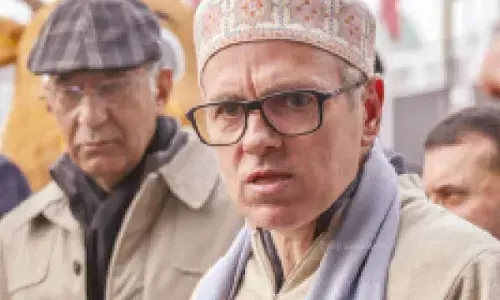Amaravati: A Capital Blunder?

I experienced this last week while I was in Vijayawada to participate in a convention against arbitrary and autocratic acquisition of land from the farmers
“Amaravati is truly people's capital,” said Prime Minister Narendra Modi while laying its foundation on October 22, 2015. Today, if one drives around the vast expanse of prime farming land razed to the ground for ‘developing’ the Rajdhani of Andhra Pradesh (AP), one can see massive banners with Chief Minister Chandrababu Naidu’s pictures presenting the ‘people’s capital’ to the people! Only that the ultra-mega world-class city of 3.5 million people which is to be delivered in five years (2020) is nowhere in existence, barring some bumpy roads, couple of buildings and heavy machines digging-up all over the place!
I experienced this last week while I was in Vijayawada to participate in a convention against arbitrary and autocratic acquisition of land from the farmers. My mind went back to the first week of December 2014 when as the head of the National Alliance of People’s Movements’ Fact- Finding Committee I visited most of the 29 villages and the farmlands that now constitute the Rajdhani and met with affected farmers and agricultural labourers, local body representatives, farmer union leaders, community activists and political party representatives.
Bitter truth
Inter alia this is what we recorded in our findings: “In an area of most diverse and prosperous agriculture, a very disturbing game of real estate speculation and land sale has been unleashed to acquire such a huge extent of land – ranging from 52,000 acres to 1 lakh acres as per various pronouncements from the government. This does not make rational sense based on the experiences of earlier capital region development like Chandigarh (which stands on just about 15,000 acres) and it is highly inappropriate to take Singapore as a model for the capital of an agrarian state like AP.”
We also noted that the actions of Government of AP (GoAP) were just the opposite of what was contained in the Report of the Government of India-appointed Site Selection Committee under the AP Reorganisation Act, headed by KC Sivaramakrishnan. The Committee had recommended least possible dislocation to existing agriculture systems, preservation of local ecology, promoting environmentally sustainable growth, minimising the cost of construction and acquisition of land etc.
With the region a ‘food bowl,’ the Committee was not in favour of siting the capital in the Vijayawada-Guntur-Tenali-Mangalagiri Region, particularly in the fertile multi-crop area on Krishna Riverfront. The Committee had suggested a careful search for locations where suitably large parcels of government or non-farming land may be available.
Most fertile land
Instead, the ‘People’s Capital’ is sited in arguably the most fertile farming land in the country wherein around 120 varieties of crops are grown throughout the year except for 10 days when the land is ploughed. The area also had a vibrant agro-economy of Rs 1,000 crore per year, with complete linkages from farm to market. The interesting fact is that this economy was mostly led by women entrepreneurs.
Shrinking greenery, water to 30%
AP Chief Minister has this wild ambition of making its Rajdhani one of the world’s urban wonders, something like Singapore, Hong Kong and Shanghai all rolled into one. Ajay Jain, Principal Secretary in charge of AP Capital Region Development Authority, parroted his boss’ vision when he said, "City of Amravati is planned as a happy city. Happiness is the most dominant concept of this new capital city where greenery and water would dominate about 30 per cent of the land.” What a way to bring ‘happiness’ by destroying 100% greenery and water and replacing it with 30%!
Indeed, a real wonder!
Though the dream and ambition were huge, GoAP just did not have the means or resources to even attempt to build a massive Rajdhani comprising nine cities -- media, sports, government, justice, finance, knowledge, tourism, electronics, health – which was estimated to cost upwards of Rs 4 lakh crore. Therefore, GoAP decided to make the Capital City project a brazen model of real estate business. Thus, was born the outlandish idea of grabbing 34,000 acres under the Land Pooling Scheme (LPS).
A genuine LPS is a voluntary process to assemble small parcels of urban/urban fringe land without paying cash compensation to owners. Such lands are put to urban use and in barter some ‘developed’ plots are allotted to the original owners with right to alienate. The pooling authority retains a portion of the assembled lands, applying them partly to provide civic infrastructure amenities and the remainder for public sale to recover the cost of development.
Main imperatives of such LPS are: Financial viability with projects of manageable size; preparation and publication of a pooling scheme for each project in consultation with landowners and each scheme/project being supported by a financial plan. None of these features is present in the Amaravati LPS. The LPS in vogue at Amaravati is a business model wherein farmers (85% of them small/marginal with less than 2/3 acres holding) give their land free in barter for future ‘developed’ plots.
GoAP with taxpayer’s money ‘develops’ urban plots by providing physical and social infrastructure, low-cost housing, parks, gardens, playgrounds etc., in 50% of land. Private real-estate dealers called ‘development entities’ do business with the 50% ‘developed urban plots’ and make windfall profits without any investment or risk. Such a deception can never succeed.
Sensing the ‘capital blunder’ and failure of the LPS, GoAP has drastically amended the Land Acquisition Act-2013 to make LPS coercive and compulsory and exempt it from Registration. Even then the marauders cannot succeed. All they would achieve is to destroy a peasant economy and this reminds one of Oliver Goldsmith’s famous pastoral poem, ‘The Deserted Village’ (1770):
“Ill fares the land, to hastening ills a prey; where wealth accumulates, and men decay; Princes and Lords (in this context read Realtors & Contractors) may flourish, or may fade; a breath can make them, as a breath has made; but a bold peasantry, their country’s pride, when once destroyed, can never be supplied.”When will we ever learn? (Writer is former Army and IAS Officer. Was Administrator, Chandigarh Capital Project)













